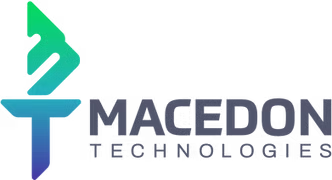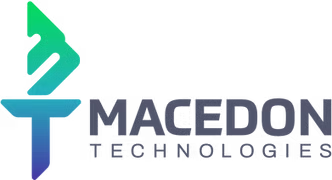Navigating Volume, Complexity, and Opportunity: Why Automation Matters in the No Surprises Act Era


Macedon’s award-winning No Surprises Act (NSA) software solution
leverages AI Automation to automate 85% of the No Surprises Act's claim processing.
Since the No Surprises Act took effect in 2022, it’s changed a lot about how providers manage out-of-network billing. Designed to protect patients from unexpected medical bills, the law also brought a big wave of administrative complexity for providers. The Independent Dispute Resolution process, in particular, has become a key piece - but it's not easy to manage at scale.
At Macedon Technologies, we’ve been watching this system mature. We're working with healthcare organizations of all sizes to help them move beyond spreadsheets and manual email reviews. With the Appian platform, we build custom, award-winning tools that streamline NSA workflows and make it easier to stay compliant while recovering more revenue.
What the Data Says: The System’s Growing Pains (and Progress)
Based on CMS and FHAS data from the first half of 2024:
- Over 610,000 IDR disputes were filed, a 56% jump from late 2023
- 348,000+ payment decisions were made - already more than all of 2023
- 460,000+ disputes were closed, up 260%
- Facilities initiated 14% of disputes, up from 10%
- Eligibility challenges rose to 45% of disputes
Interestingly, the top 10 initiators now account for 69% of disputes, down from 76%. That shift suggests more smaller and mid-sized providers are jumping in - highlighting the need for scalable, accessible solutions.
Visual Snapshot: Key Trends in the Federal IDR Process (H1 2024)
|
Metric |
Value |
Trend |
|
Total IDR Disputes Filed |
610,498 |
▲ 56% from H2 2023 |
|
Payment Determinations Made |
348,607 |
▲ 67% YOY |
|
Disputes Closed |
460,774 |
▲ 260% from H2 2023 |
|
Share by Facilities |
14% |
▲ from 10% |
|
Eligibility Challenges |
45% |
▲ from 37% |
|
Top 10 Initiator Share |
69% |
▼ from 76% |
The Manual Reality: Still Too Much Work for Too Little Return
From email overload to tight timelines, the process today is still heavy:
- Massive email volume during Open Negotiation and IDR stages
- Manual initiations, with form letters and CMS portal entry
- IDRE selection churn, with lots of back-and-forth
- Legal-heavy position statements that eat up internal bandwidth
- Revenue lost to missed deadlines
- Confusion around State vs. Federal eligibility
We’ve heard firsthand how this plays out:
- One provider shared they’re fighting payers who are now disputing $6M in previously won awards over eligibility questions.
- Another provider said their 100+ contractors are spending most of their time figuring out which IDR path applies, state vs federal.
Manual vs. Automated: How the NSA Process Transforms
|
Stage |
Manual NSA Process |
Automated NSA Workflow |
|
Email Review |
Inbox flooded, slow sorting |
Auto-ingested, routed |
|
ONP Initiation |
Manual email + PDF |
Auto-generated + submitted |
|
IDR Filing |
CMS login, manual form entry |
Pre-populated via automation |
|
IDRE Selection |
Rejected entities require repetitive logins |
Auto-tracked with optimized re-selection |
|
Eligibility Review |
Time-intensive decision trees |
Rule-based logic to assess State vs Federal |
|
Position Statement Creation |
Managed by internal/external legal teams manually |
Auto-generated with templated legal language |
|
Deadline Management |
Calendar reminders and spreadsheets |
System-assigned tasks, alerts, escalations |
Where Automation Fits In
This is where automation really starts to make a difference. At Macedon, we’re building tools that:
- Sort and route IDR-related emails automatically
- Generate ONP/IDR notifications and populate CMS forms
- Track and auto-update IDRE selections based on outcomes
- Create position statements using templates
- Assign and monitor deadlines, tasks, and alerts
- Help determine State vs. Federal eligibility using configurable logic and data input
What Organizations Are Gaining
The ROI we’ve seen with clients using our No Surprises Act solution is compelling:
- 90%+ of IDR workflows automated
- $1.3M in avoided revenue loss from missed deadlines
- $12M–$65M in additional revenue opportunity unlocked
- 80%+ of staff time freed up for more strategic tasks
Final Thought
The IDR system is evolving fast. The question isn’t whether it’s worth investing in efficiency - it’s how long providers can keep up without it. Automation isn’t about replacing teams. It’s about helping them work smarter, scale better, and avoid the risks that come with a process this complex.
If your organization is thinking about what’s next with NSA, we’d love to share what we’re learning - and how we’re helping others navigate it. Schedule time with me now to learn more.

